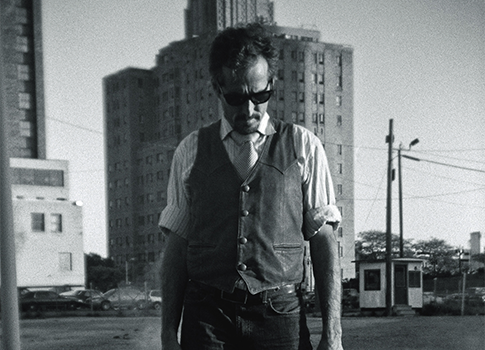A true account of Charlie LeDuff’s past few years as a reporter in Detroit, this book on the Motor City is less a memoir than a reckoning. From the the opening scene, where LeDuff discovers a frozen body in an abandoned elevator shaft, to the epilogue, where he visits the empty lot his sister died in, it’s one reporter’s unflinching look at a city bleeding to death.
Detroit: An American Autopsy opens in 2008, in the midst of the recession, with LeDuff quitting his enviable job at the New York Times and his sunny but boring life in L.A. to head back to his hometown and a job at the Detroit News. For those unfamiliar with the newspaper hierarchy, this is the equivalent of voluntarily moving from the Los Angeles Lakers to, well, the Detroit Pistons.
"Circling back to Detroit was instinct, like a salmon needing to swim upstream because he is genetically encoded to do so," LeDuff writes. "Detroit might be the epicenter, the funhouse mirror and future projection of America. An incredibly depressed city in its death swoon."
It’s not an original idea—to set up shop in some fresh hell and extrapolate "greater truths" from it—and in the hands of a lesser writer it would be a gimmick. But LeDuff writes about Detroit the way David Simon wrote about Baltimore: He has a preternatural talent for digging stories out of everyone from street-corner hoods to police on the beat to backroom political consultants.
He’s also kind of a maniac. According to a 2008 profile of LeDuff, he enjoys smashing wine glasses over his head to throw people off balance. He was recently arrested for drunkenly biting a security guard and urinating in public.
So when LeDuff arrives back in Detroit and grasps fully the depth of the city’s corruption, he starts throwing bombs. The chapters consist of short vignettes of LeDuff’s investigative reporting, moving from scandal to scandal. Sometimes his stories bag the bad guys. Others, the bad guys get away red-handed.
An American Autopsy often reads like an old detective novel. There are mustachioed homicide detectives, hit men, con men, grifts and drugs, greed, and corruption.
The stories are often as bizarre as they are morbid. The local morgue has a backlog of hundreds of unclaimed bodies. Meanwhile, people are having corpses exhumed from Detroit graveyards and relocated elsewhere.
Even the dead are fleeing Detroit.
There are more details like that in the book. So many of them, in fact, that it is jaw-dropping to think this was, and still is, occurring in a major U.S. city. The scene where LeDuff sits down for drinks with former city councilwoman Monica Conyers, who was sentenced to 37 months in federal prison for conspiracy to commit bribery, is worth the price of the hardcover alone.
It seems appropriate, then, that the prose is hard-boiled in the fine tradition of Chandler and Hammett.
"Two of our neighbors’ fathers worked at the leviathan Ford River Rouge complex in Dearborn, on the western city limits of Detroit," LeDuff writes. "It must have been terrible there. They both killed themselves with a rope. Who knows?"
Here’s a description of one of his brothers: "Frank is six-one and 130 with a pound of pennies in his pockets."
LeDuff is less concerned with the people who are gone than those who refuse to leave out of sheer cussedness: The firemen who rush into burning buildings every day with faulty equipment; the people who mow the lawns of the foreclosed and abandoned houses around them; his brother, who pulled out a tooth with a pair of pliers because he was too proud to take out a loan.
LeDuff’s family—the death of his sister in particular—is the emotional foundation of the narrative. But it also creates a problem: It’s all personal for LeDuff.
LeDuff is at his best when he’s profiling the working people, rather than the hucksters leeching the city dry. In his quest to clean up the city, he uses his position as a reporter to take on charities and vendettas in a way that sometimes comes across as preening. Many journalists consider it exhibitionist at best and compromising at worst to attach oneself so thoroughly to the story.
Then again, precious few of those journalists spend time sitting with a mother who watched her son die of a gunshot wound because the city is so broke that an ambulance wasn't available.
It would have been dishonest for LeDuff to tell the story any other way.
